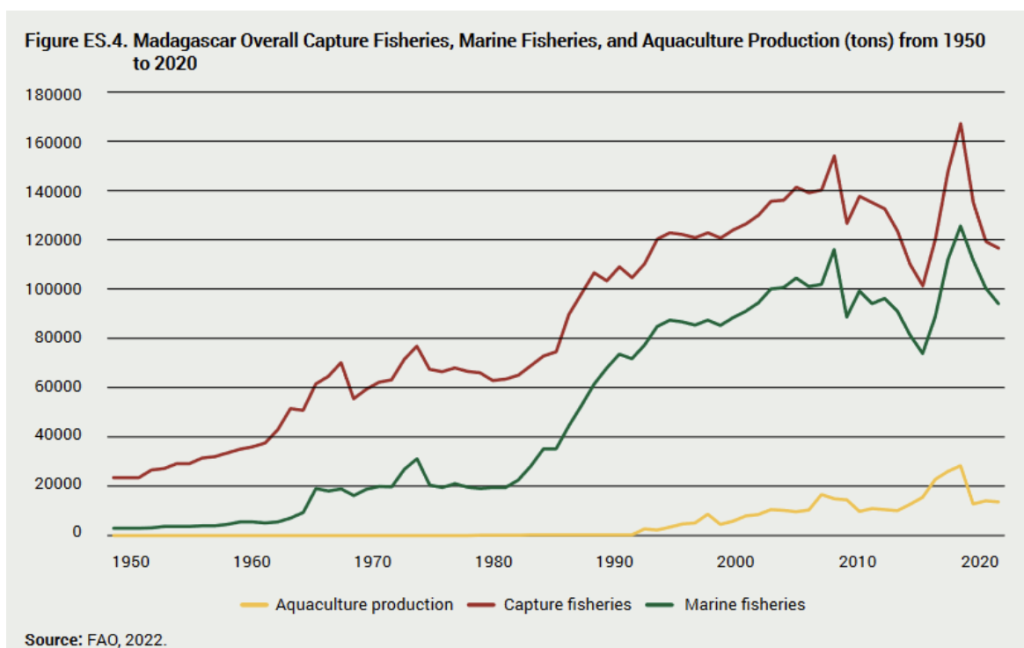Chapter 3 focuses on the blue economy, in particular on the fisheries and aquaculture sector.
FULLY REALIZING THE POTENTIAL OF THE BLUE ECONOMY
Madagascar has the longest coastline in Africa (5,600 km) and the fourth largest Exclusive economic Zone in the world (over 1.22 million square kilometers), an area nearly double its landmass.
However, these ecosystems and the services they provide are at risk, which in turn threatens the development of the industries that depend on them.
Madagascar has yet to fully tap into the potential contributions of its marine natural capital to economic development.
Madagascar needs to build on its ongoing efforts to transition to a Blue Economy, leveraging its blue assets for economic development. Since 2015, efforts have been made to create the necessary framework for this transition, including the creation of a Ministry of Fisheries and the Blue Economy in 2021. In addition to these efforts, there is a need to:
-
Finalize, adopt, and implement a Blue Economy strategy;
-
Formulate and implement Marine Spatial Plans (MSP) to guide the development of the Blue Economy and private sector investments;
-
Improve investment climates for emerging industries and incentivize increases in compliance and mitigation of impacts on marine ecosystems.

| Year of publication | |
| Geographic coverage | Madagascar |
| Originally published | 21 Nov 2022 |
| Related organisation(s) | World Bank |
| Knowledge service | Metadata | Global Food and Nutrition Security | Fisheries and aquaculture and food and nutrition security | Ecosystems and biodiversityLand degradation |
| Digital Europa Thesaurus (DET) | economic analysispolicymakingfishery resourcesfishery managementnatural resourcesdegradation of the environmentaquatic ecosystemblue economy |
